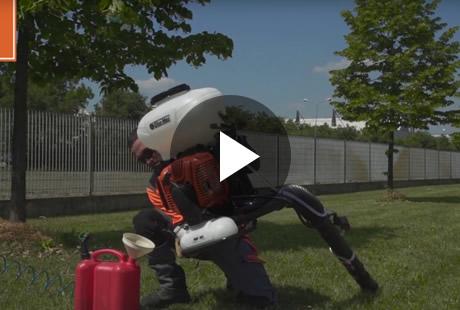How to maintain a lawnmower

Lawnmower maintenance is essential if you want to keep your machine in perfection condition for mowing gardens, country lawns or city parks, depending on the type of machine. In addition, being consistent when it comes to routine and non-routine lawnmower maintenance will reward you in the end, because it ensures a longer service life, prevents unexpected breakdowns and allows you to get the most out of your purchase.
Today we explain how to perform maintenance on electric and petrol engine lawnmowers, distinguishing between routine and non-routine maintenance.
Preparing for lawnmower maintenance
Let’s start by saying that you need to work safely when performing routine or non-routine lawnmower maintenance. So:
-
Make sure the engine is switched off, cooled down and the moving parts have come to a standstill.
-
Do you have a petrol engine lawnmower? Unplug the spark plug from the engine by removing the boot cap, to avoid accidental starts.
-
If you have an electric lawnmower, unplug the power cord from the mains socket.
-
Protect your hands with utility or cut resistant gloves when checking the mower blade.
In addition to maintenance that you can do on your own, every 1 or 2 years (depending on how intensively you use your mower), we recommend taking it to one of our sales outlets and service centres for a general check-over.
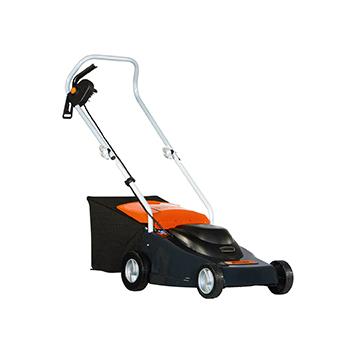
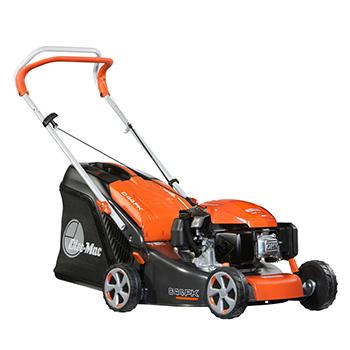
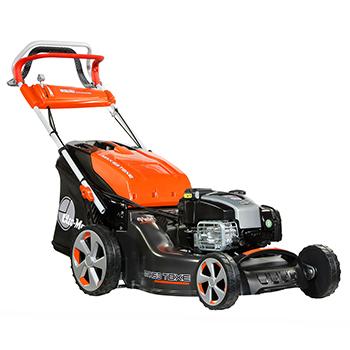
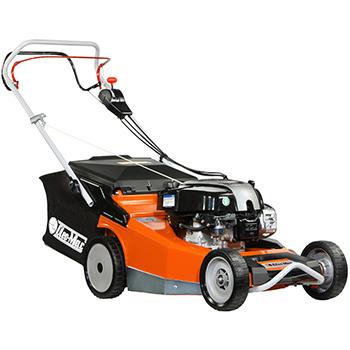
Routine lawnmower maintenance
Let's talk about routine lawnmower maintenance, which needs to be done every time you finish mowing. Don't be tempted into thinking: "I can do it next time." Try to consider routine maintenance as a long-term investment for the health of your lawnmower, which in return will provide you with perfect efficiency and impeccable mowing performance.
These are the tasks you need to perform at the end of each work session, whichever type of lawnmower you use:
-
Remove the collection bag, check it for damage and clean it thoroughly using compressed air. If the bag is made of fabric and the stitches are clogged with grass, wash the bag with a jet of water and let it dry.
-
Clean the machine's chassis and at the same time check whether it is damaged (perhaps due to having struck a garden wall).
-
Clean the engine cowling vents to help the machine cool down.
-
Support the lawnmower on one side (with the air filter facing upwards), or on its rear side, and remove any grass from the underside of the deck with a spatula and compressed air.
-
Check the condition of the blade and the tightness of the blade fixing bolt: for more information about the mower blade, see the section on non-routine maintenance.
-
Clean and check the condition of the mower accessories you use: for example, the rear deflector and side discharge deflector, or the mulching kit components.
If you have a petrol engine lawnmower—such as the G 44 PK COMFORT PLUS push-type lawnmower or the MAX 53 TBXE ALLROAD ALUMINIUM self-propelled lawnmower—then routine maintenance involves a couple of extra steps:
-
Keep the engine air filter clean: disassemble it and tap it on a hard surface, or if that's not enough use a brush, or gently blow compressed air through the filter from the back.
-
Clean the engine cylinder fins using a brush or compressed air.
On the subject of petrol engine lawnmowers, would you like one that starts easily and effortlessly? The Oleo-Mac TKE range of lawnmowers offers you three new electric start models: simply press a button to switch on the mower.
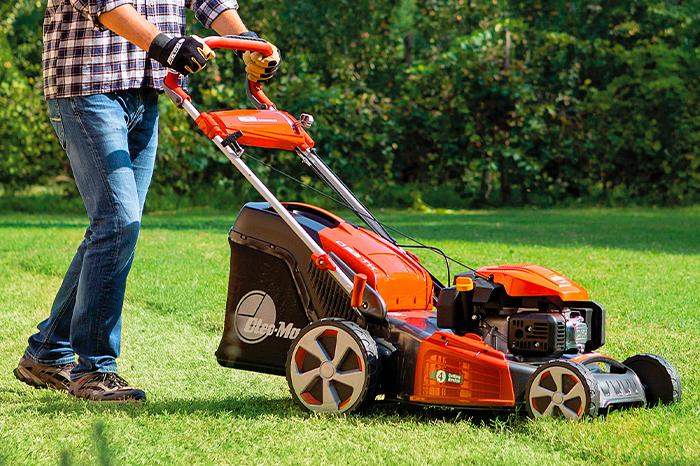
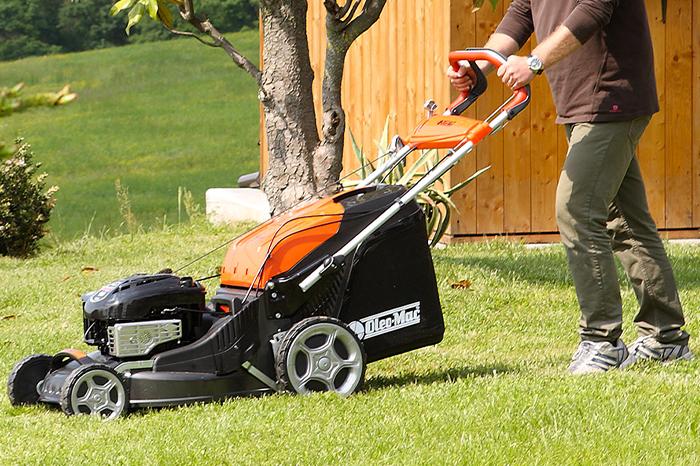
Non-routine lawnmower maintenance
Now let’s talk about non-routine maintenance of petrol or electric-powered lawnmowers: this series of tasks should be performed before putting the lawnmower back into full service in spring, when lawns start to turn green again, and/or before winter storage.
After making the machine safe, you need to perform the following non-routine maintenance tasks, which apply to both petrol engine and electric lawnmowers:
- Give the lawnmower a good clean, including the underdeck: before the winter break perform a more thorough clean than the one you do at the end of each work session.
-
Clean and lubricate the pin and pinion of the gear wheels to ensure smooth movement and prevent the parts from wearing out.
-
Check that the blade is still well sharpened and undamaged.
A sharp blade is essential for cutting grass cleanly without tearing it: if the blade is blunt it should be sharpened, balanced and reassembled correctly. We recommend that this critical procedure is performed by a service centre. On the other hand, if the blade is misshapen or broken in any way, it is better not to try to repair it. Instead replace it with an original spare. This is also a job best done by a service centre: visit your nearest Oleo-Mac service centre.
If it’s a lawnmower equipped with a mulch cutting system in addition to the conventional blade, also check the mulching blade. For example, this is the case with the G 48 TK COMFORT PLUS and LUX 55 TBD petrol-driven self-propelled lawnmowers with optional mulching kit. Or with self-propelled lawnmowers, like the MAX 53 TK ALUMINUM PRO and G 53 TK ALLROAD PLUS 4 featuring a mulching function as standard.
If you have an electric lawnmower, such as the Oleo-Mac K 40 P, perform the above tasks and also:
-
Check that the power cable is intact and not worn or cut, paying particular attention to the connection points between the cable and the machine. If it is damaged, we recommend having it replaced by a service centre.
-
Clean the engine: remove the cover and clear the engine of any accumulated grass debris and earth; to do this you can use compressed air.
However, if you have a petrol engine lawnmower, here's how to keep it in top condition with careful non-routine maintenance, year after year:
-
Check the air filter like you would when performing routine maintenance: if it’s damaged or too dirty, change it.
-
Clean the spark plug and check the distance between the electrodes: if necessary, replace it following the manufacturer's recommendations.
-
Early in the season change the engine oil: extract the old oil using an oil suction syringe and fill the tank to the correct level with new oil recommended for garden tools.
-
At the end of the season, empty the fuel tank and, to use up all remaining fuel, let the lawnmower run idle until the engine cuts out by itself.
Make sure during the winter months that the lawnmower is stored in a dry and sheltered place away from heat sources and chemicals (which could corrode the metal components), and preferably covered by a sheet.
Take a look at this video which summarises the main things to check before starting a petrol engine lawnmower.
If you haven’t yet chosen your new lawnmower, in this article you will find a rundown of the different types of lawnmowers on the market, differentiated by power source, propulsion (push-type or self-propelled) and type of use (professional or non-professional).


